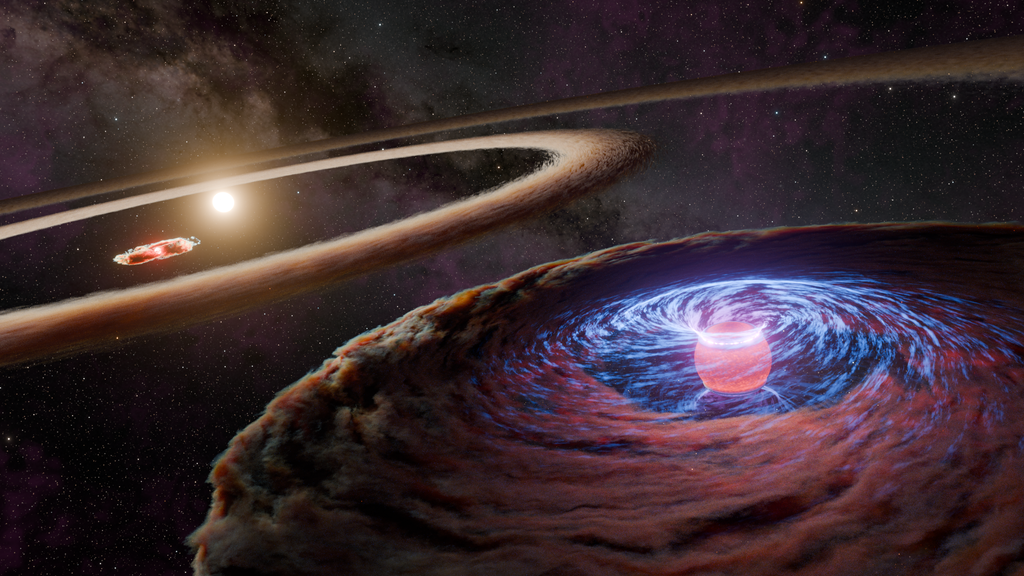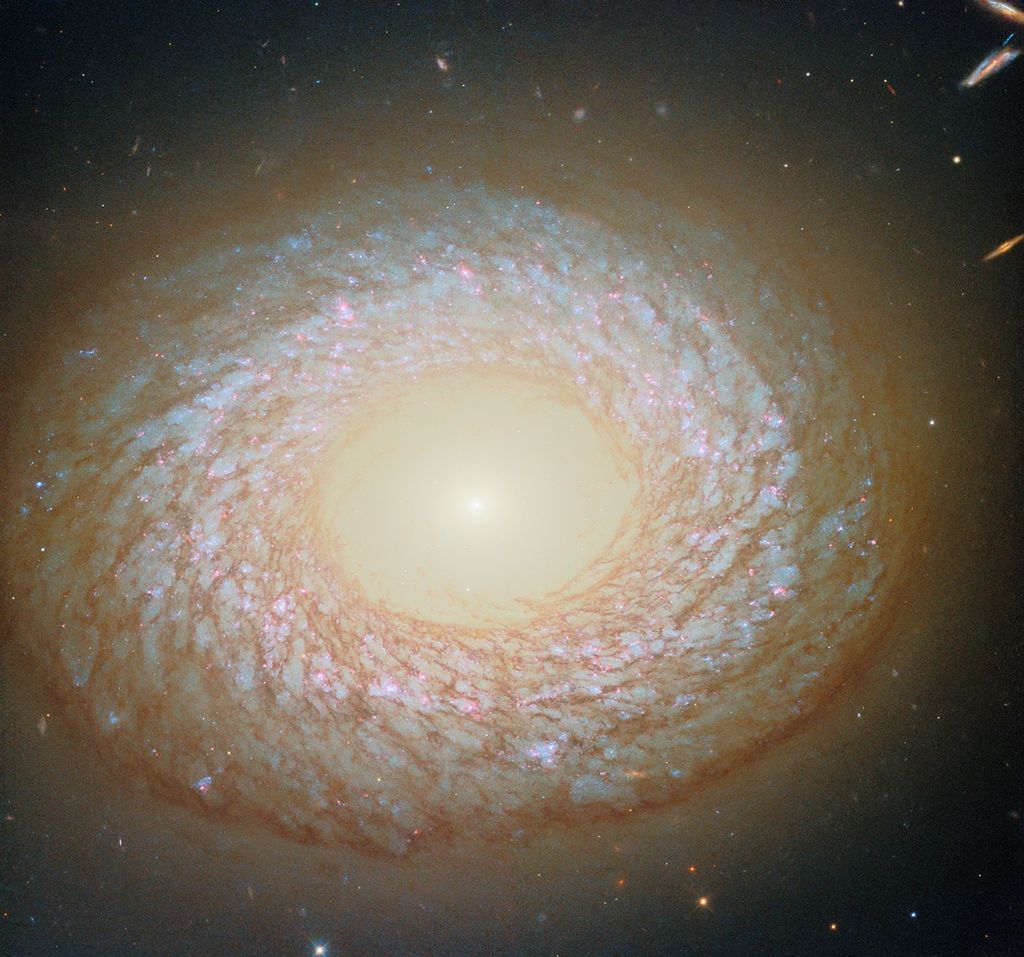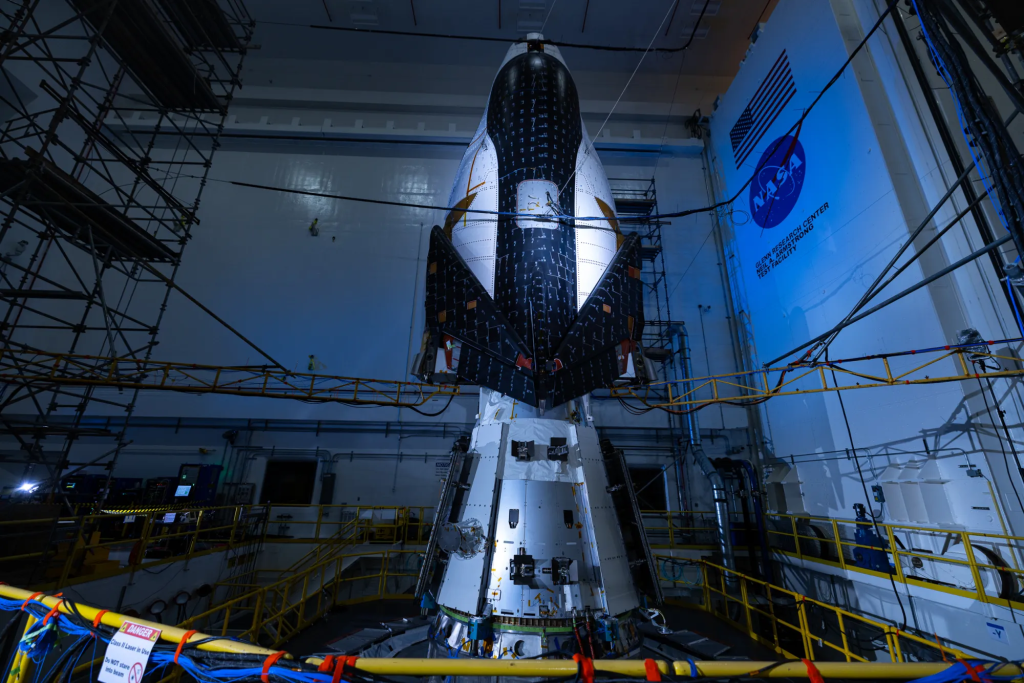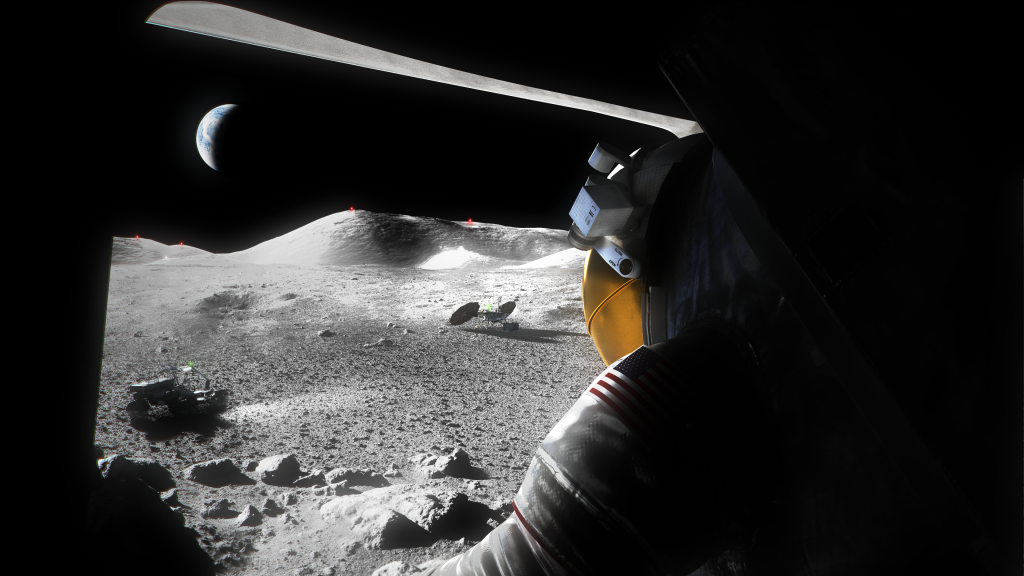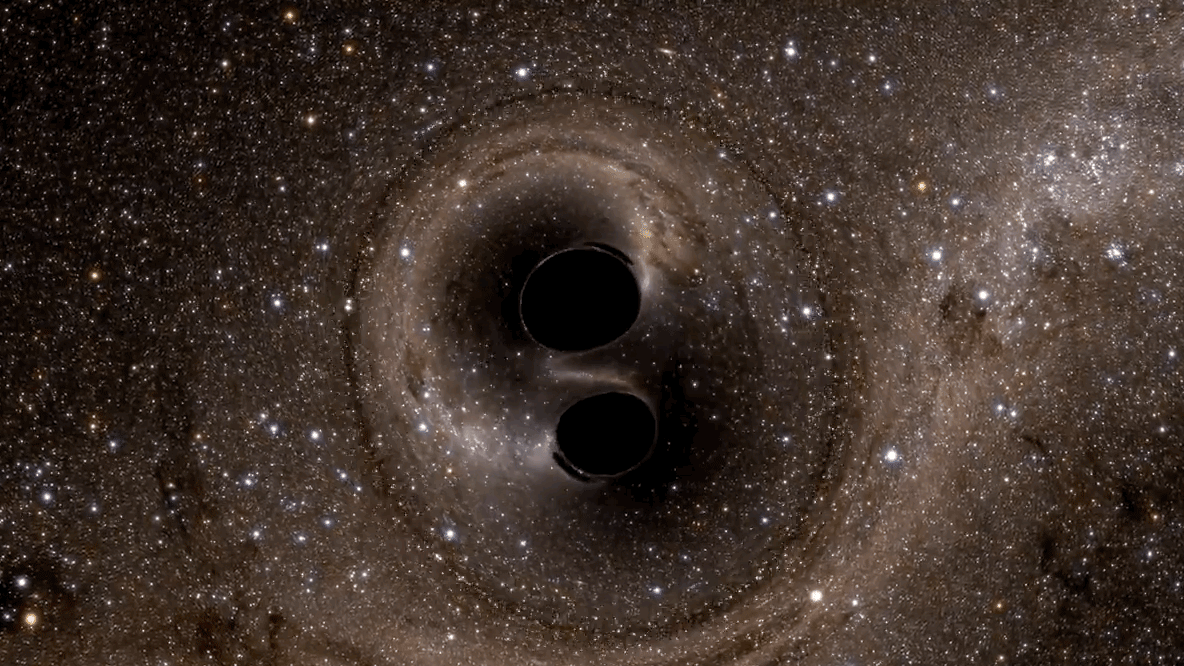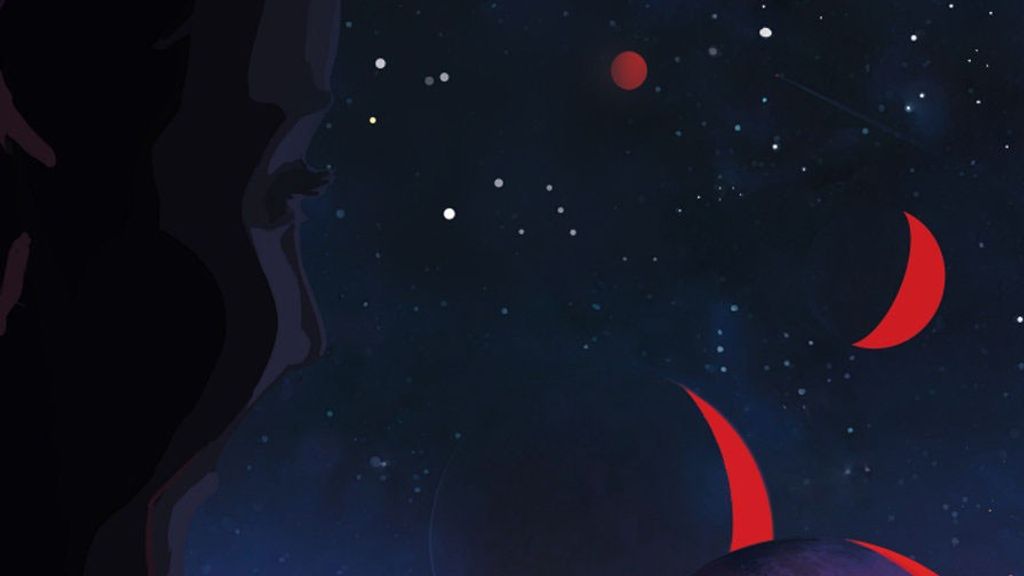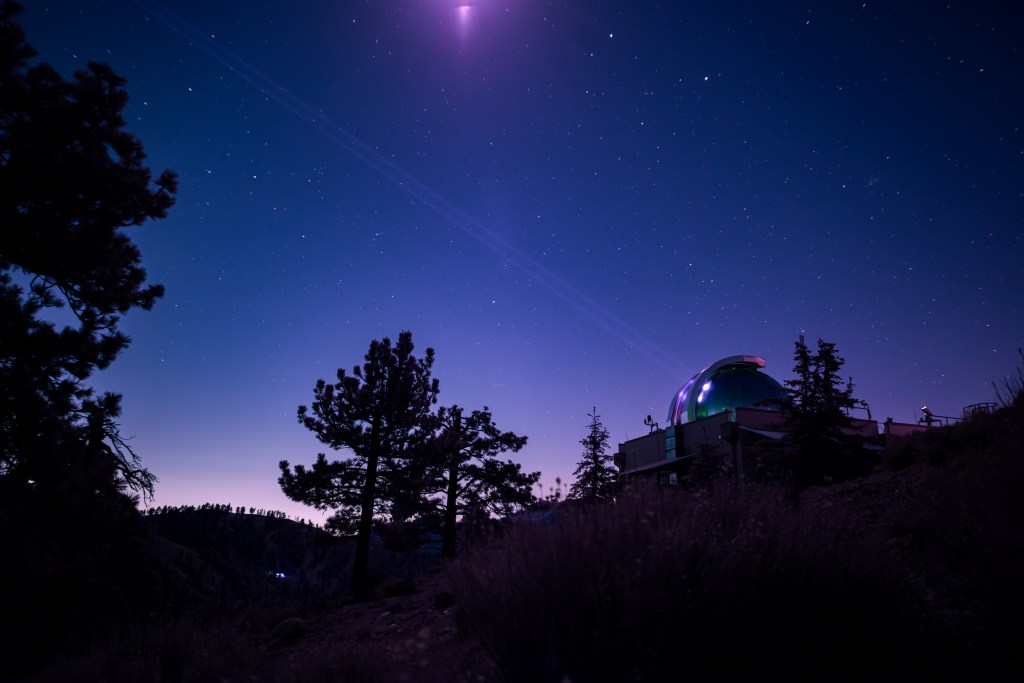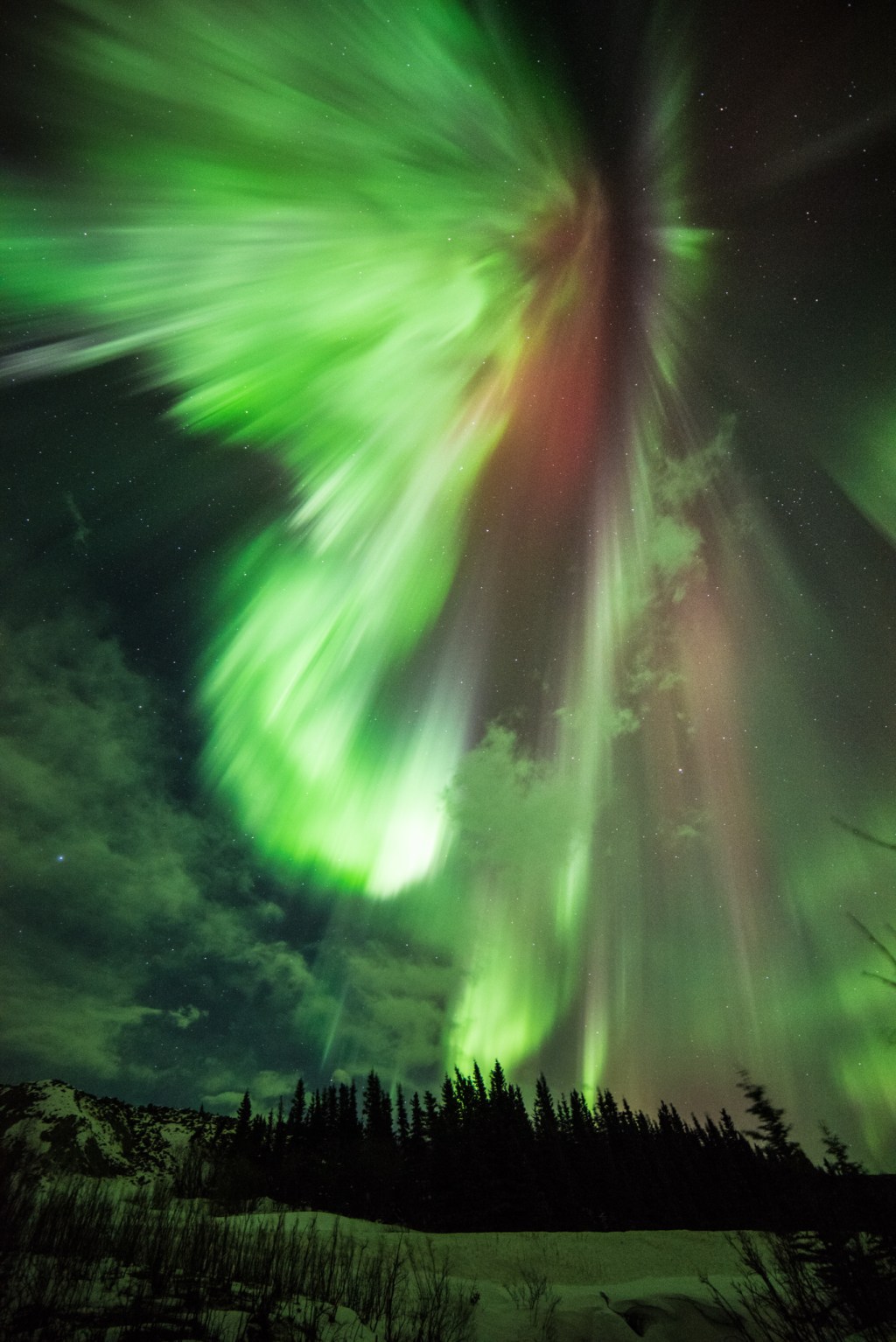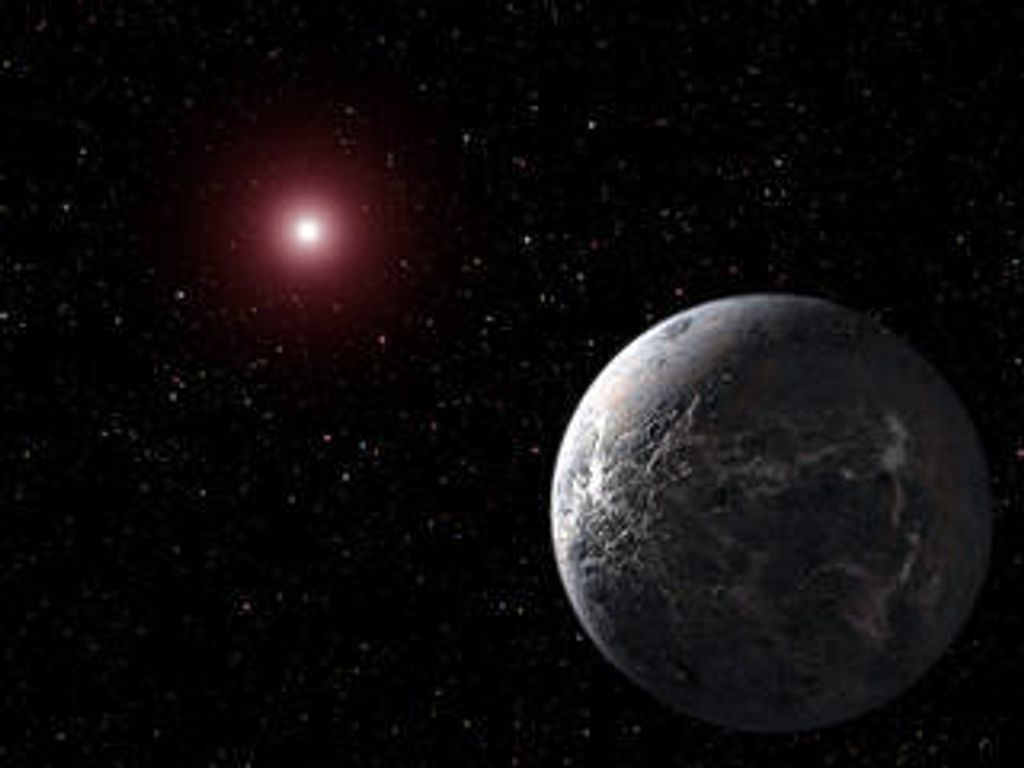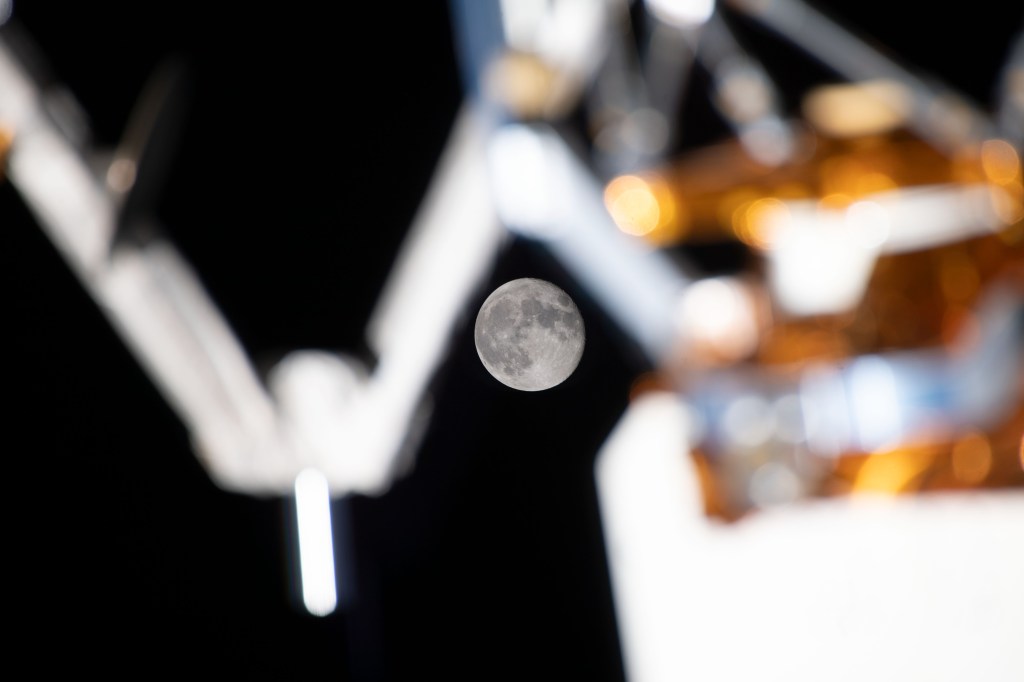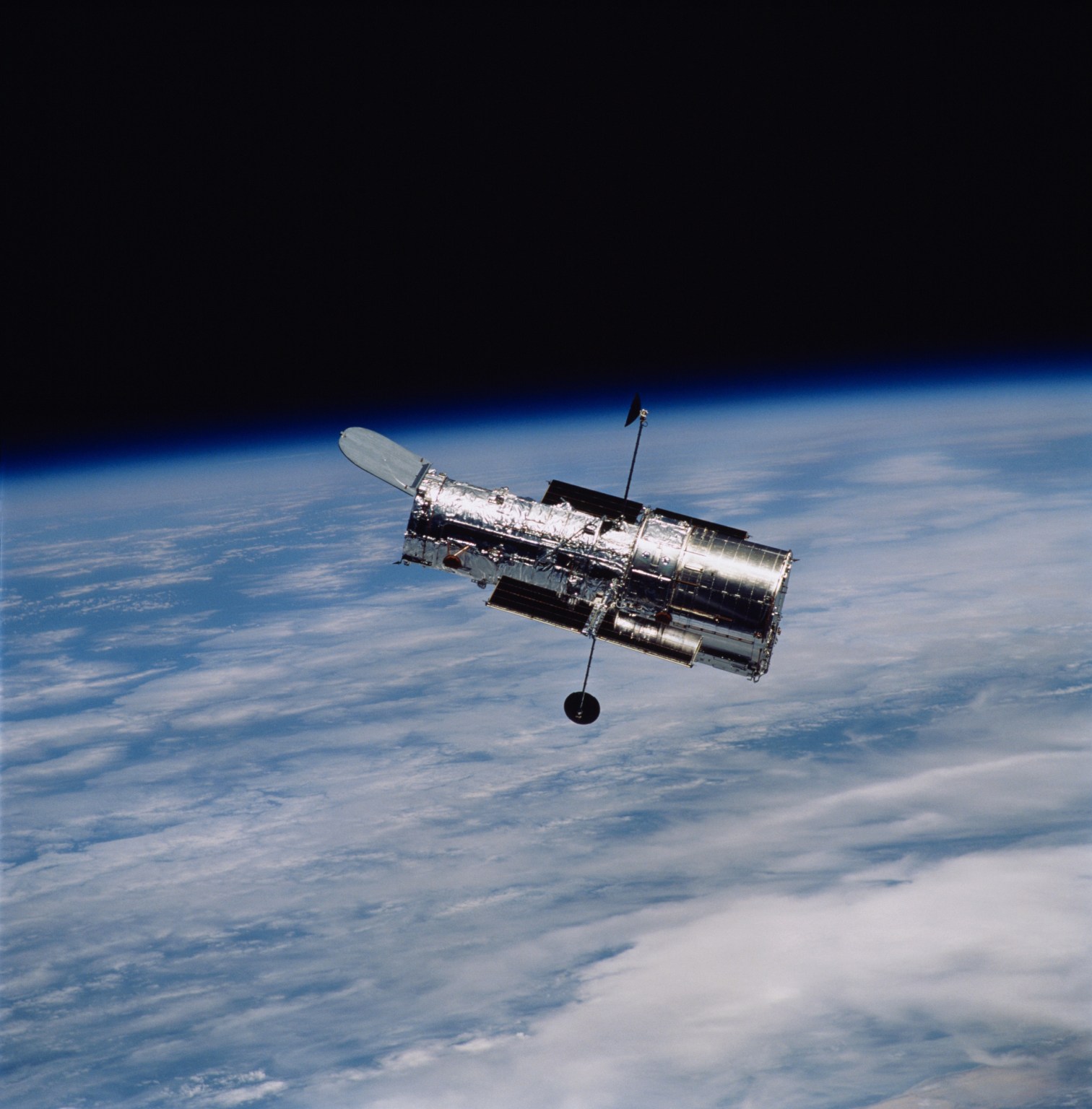1 min read
Saturn Compass and Scale
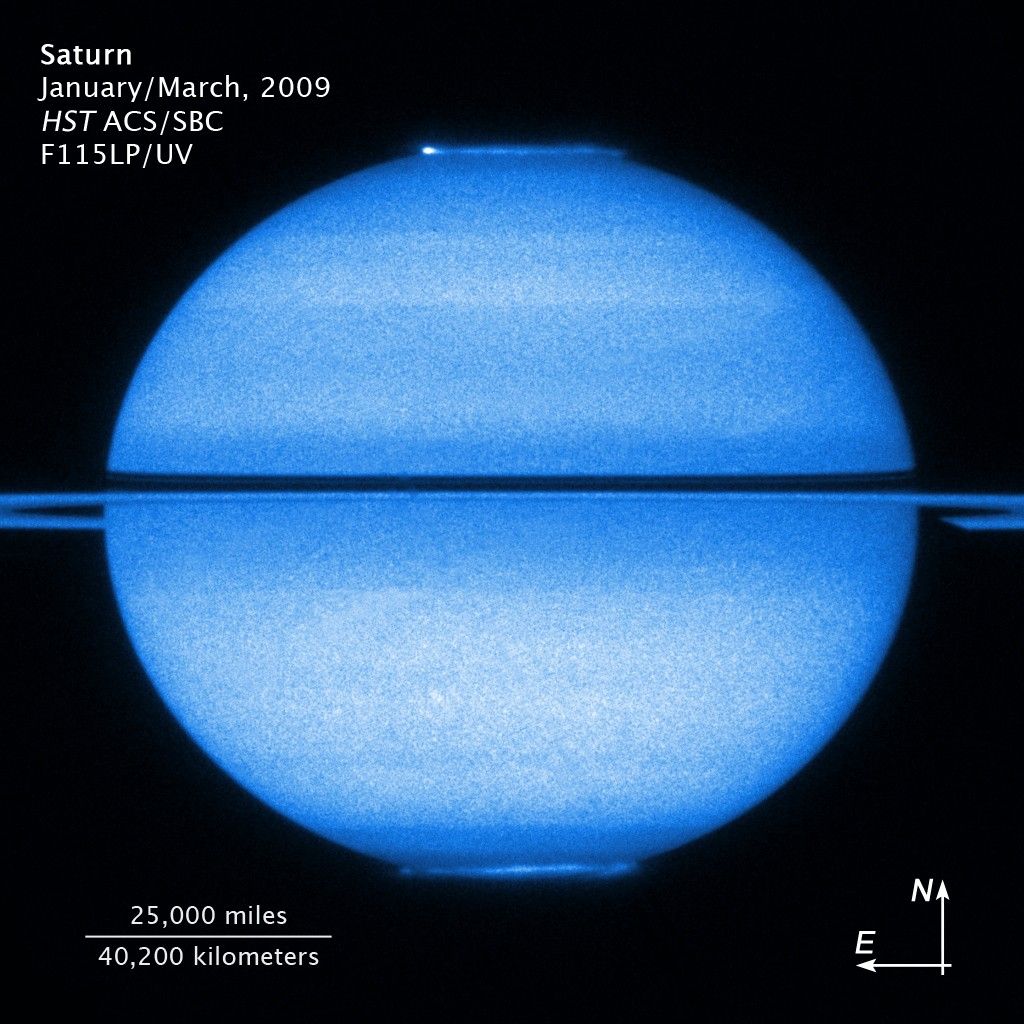
About the Object
- DistanceDistanceThe physical distance from Earth to the astronomical object. Distances within our solar system are usually measured in Astronomical Units (AU). Distances between stars are usually measured in light-years. Interstellar distances can also be measured in parsecs.The semi-major axis of Saturn's orbit about the sun is 9.5 astronomical units (A.U.) or roughly 1.4 billion km.
- DimensionsDimensionsThe physical size of the object or the apparent angle it subtends on the sky.The planet (without rings) has a diameter of roughly 75,000 miles (120,000 km) at the equator.
About the Data
- Data DescriptionData DescriptionProposal: A description of the observations, their scientific justification, and the links to the data available in the science archive.
Science Team: The astronomers who planned the observations and analyzed the data. "PI" refers to the Principal Investigator.The image was created from Hubble data from proposals 11566 and 11984: J. Nichols et al. The science team comprises: J. Nichols, S. Badman, and E. Bunce (University of Leicester), J. Clarke (Boston University), S. Cowley (University of Leicester), F. Crary (Southwest Research Institute), M. Dougherty (Imperial College, London), J.-C. Gerard and D. Grodent (University of Liege), K. Hansen (University of Michigan), W. Kurth (University of Iowa), D. Mitchell (JHU/APL), W. Pryor (Central Arizona College), T. Stallard and L. Talboys (University of Leicester), and S. Wannawichian (Boston University). - InstrumentInstrumentThe science instrument used to produce the data.HST>ACS/SBC
- Exposure DatesExposure DatesThe date(s) that the telescope made its observations and the total exposure time.January - March 2009
- FiltersFiltersThe camera filters that were used in the science observations.F115LP (UV) and F125LP (UV)
- Object NameObject NameA name or catalog number that astronomers use to identify an astronomical object.Saturn
- Object DescriptionObject DescriptionThe type of astronomical object.Planet
- Release DateFebruary 15, 2010
- Science ReleaseHubble Captures Saturn’s Double Light Show
- Credit

This image was originally black and white and recorded only overall brightness. These brightness values were translated into a range of bluish hues. Such color "maps" can be useful in helping to distinguish subtly varying brightness in an image.
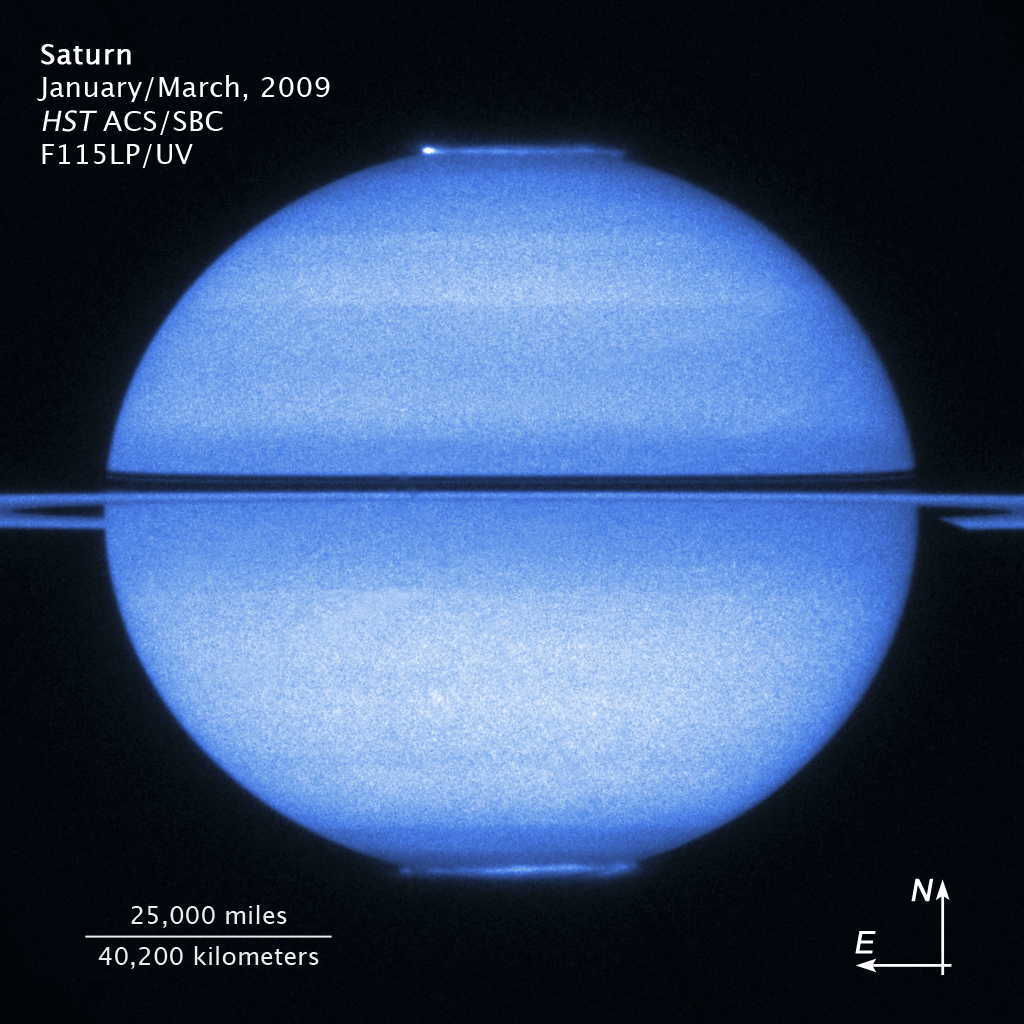
Related Images & Videos

Saturn's Double Light Show
In January and March 2009, astronomers using NASA's Hubble Space Telescope took advantage of a rare opportunity to record Saturn when its rings were edge-on, resulting in a unique movie featuring the nearly symmetrical light show at both of the giant planet's poles. It takes...
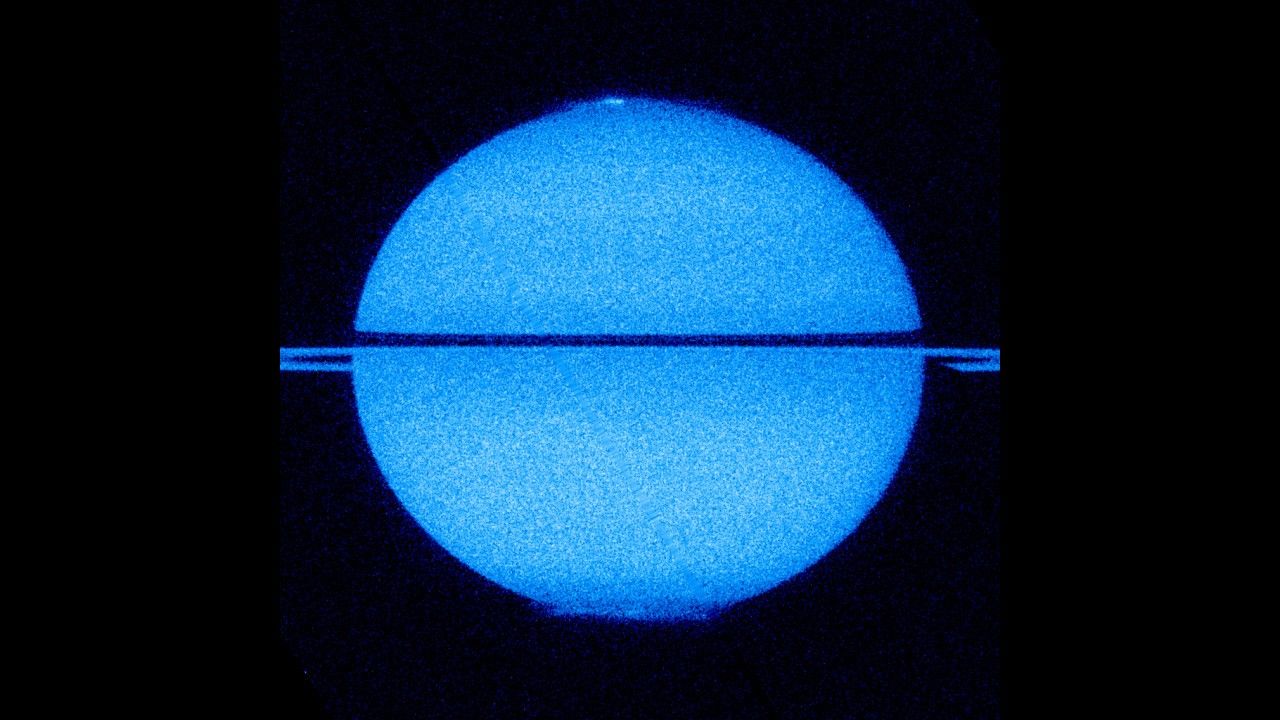
Saturn's Double Light Show
In January and March 2009, astronomers using NASA's Hubble Space Telescope took advantage of a rare opportunity to record Saturn when its rings were edge-on, resulting in a unique movie featuring the nearly symmetrical light show at both of the giant planet's poles. It takes...
Share
Details
Claire Andreoli
NASA’s Goddard Space Flight Center
Greenbelt, Maryland
claire.andreoli@nasa.gov

